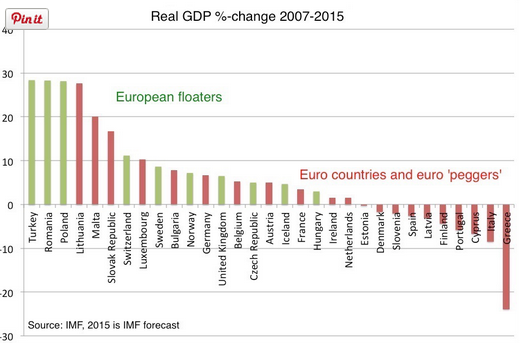Tyler Cowen has a post on the labor market, and also links to a response by Adam Ozimek. I mostly agree with Adam, but would like to make the points in a slightly different way. Here’s how Tyler starts out:
One striking feature of the Thursday labor market report was the mix of declining unemployment “” now down to 5.3 percent “” and continuing sluggish wages, not to mention low rates of price inflation; read Neil Irwin. Normally we would expect all the demands for those new hires to boost wages more. What is going on?
My initial response is “All what demands for those new hires?” I don’t see any sign of increased demand for labor, at least in the intro provided to his post. Instead, I see an increase in the equilibrium level of employment. And also sluggish wages. I can think of two possible explanations, neither of which involve more demand for labor:
1. The supply of labor shifted right, holding down wages and increasing employment. That’s the equilibrium model.
2. The supply and demand for labor are stable, but actual wage rates are above equilibrium due to sticky wages. As wages gradually adjust, the horizontal sticky wage line moves downward (relative to 4% NGDP growth) and this increases quantity demanded of labor and lowers quantity supplied. Unemployment falls. But again, no increase in the demand (curve) for labor.
So the answer to the “What is going on?” question is, “No, normally we do not expect rapid growth in employment to be associated with fast growing wages. Normally we expect fast growth in employment to occur in depressed economies, and to be associated with slow wage growth.”
I sometimes hear it argued that there is a good news aspect to this development, suggesting that the absence of wage pressures indicates there are many more people to be hired. I wonder if this argument makes sense. If we don’t observe a worker willing to take a job for current wages, how is that a cause for optimism about future reservation wages for those same workers? I would think it implies some slight pessimism about whether those individuals will end up working again. I’m not sure those workers are going to be worth so much more in the market anytime soon.
Maybe the workers are willing to take the jobs at current wage rates. But they can’t find them due to sticky wages. Yes, my explanation is ad hoc, but doesn’t it fit the facts? My explanation predicts slow wage growth. Check. My explanation predicts total employment growing each month at a rate much faster than the working age population. Check. Any other explanations fit the facts that well?
And my explanation implies optimism. If employment is growing fast BECAUSE wages are rising at a slow rate, then the longer wages rise at a slow rate, the longer employment can rise quickly. (This is Ozimek’s basic argument.)
Just to jog your memory, the data do not indicate much of a stable Phillips curve.
That’s right, the Phillips Curve model is flawed because it assumes a stable supply of labor. And the evidence suggests that the supply of labor is increasing.
Alternatively, you might think the employment of those remaining unemployed workers is constrained by demand side forces. I find that unlikely at this late date in the recovery but even so, this demand side hypothesis also gives no particular reason for optimism, given a very conservative Fed.
Studies suggest that downward wage flexibility is much more difficult at the zero wage rate increase bound, perhaps due to money illusion. So there still could be a bit of residual effects from the recession, and from the unusually low rate of NGDP growth during the recovery (which itself is a sort of shock, if workers expected this recovery to be like other recoveries.) And recall that unemployment is down to 5.3%, so the vast majority of the labor market healing has already occurred. There is room for optimism because each month we get over 200,000 new jobs, which is much faster than growth in the working age population. If wages were suddenly rising fast, we would know that we’d be close to full employment. But that hasn’t happened yet.
Liquidity trap models do not explain why the rate of price inflation continues to be pretty much where the Fed wants it to be, and thus they also do not explain this constellation of market forces. There is too much labor market recovery going on.
Yup, (simple) liquidity trap models don’t explain much of anything, including the inflation rate. They don’t account for QE and other unconventional forms of monetary stimulus.
I find the most plausible explanation to be a version of The Great Reset. A lot of workers have been revalued by the market downwards, but most incumbents are not taking pay cuts in real terms because they have insider power. New hires, however, are not granted equally favorable terms. If wages are steady as new hires pick up, this is in fact upward pressure relative to the counterfactual that otherwise those wages would be falling. Flat wage are indeed what “things heated up” looks like, and it’s a good thing we had that gas price decline to bump real wages up just a bit.
Tyler’s right about the Great Reset, and this needs to be combined with the standard AD model. It’s one reason why the recovery has taken so long; we need even more downward wage flexibility than would be the case if the labor market were not gradually moving against the bottom half of the wage distribution. But the last sentence is probably wrong; real wages don’t matter, W/NGDP matters. The oil price decline did not boost NGDP, and that’s one reason why MMs correctly predicted it would not speed the labor market recovery, while conventional economists incorrectly predicted it would.


